Plant of the Month: May 2023
|
| Birdnest or Tamarisk Cypress |
Chamæcyparis Lawsoniana 'Tamariscifolia'
|
CUPRESSACEÆ ; Cypress Family
|
| This is the story of one clone / cultivar of Lawson Cypress. The natural range of Lawson Cypress / Port Orford Cedar is limited to the small area where it is a dominant forest tree: SW Oregon & extreme NW California. There, the largest specimens measured as much as 245 feet tall, and various champions had trunks more than 8 feet thick. Cultivated since the second half of the 19th century, Lawson Cypress possesses astonishing variability: over 200 cultivars are known, ranging from dwarf bushes to tall, graceful trees. No other conifer is so variable. It is beloved both for its lumber and its beauty. In 1918, A.D. Webster praised "its cheerful and desirable shade of green all the year and gracefully recurved and feather-like branchlets, neither of which is surpassed by any other conifer." In 1996, Alan Mitchell noted: "In cultivation it is a great deal more variable than any other conifer, despite being singularly uniform in its native stands. It has yielded cultivars of an extraordinary range of patterns of foliage, textures, and every colour which is available to a conifer. It is, with its cultivars, the prime tree in garden layouts for shelter, winter colour, backbone and winter form, for eye-catchers and for colour-features, for cover for birds nesting and roosting. It can also be shaped into topiary. It is bone hardy and grows happily on most soils. It is the ideal, general purpose and ornamental tree, with forms available to suit any space." |
| In Seattle, Lawson Cypress / Port Orford Cedar thrives and has been much planted. It even pops up wild here and there. Alas, it is unusually prone to being uprooted or split by violent windstorms, and is killed by easily transmitted, incurable root rots (Pythium and Phytophthora). However, some cultivars are far sturdier and more disease-resistant than others. Also disease-resistant rootstocks are now available. The 2nd edition of my book Trees of Seattle features a sampling of the city's more common and/or distinctive tree-sized cultivars --18 kinds. One not in that book is featured in this article. |
| This clone, which I believe is accurately called 'Tamariscifolia' has been scarcely grown and sold in North America by that name. It was raised at James Smith & Son Darley Dale nursery, near Matlock, England, some time before 1919, and was first described in a book in 1923. 'Tamariscifolia' was in both Canada and the USA by 1922. However, it has been distributed here mostly under several other names, including: Grandi, Nestoides, Nidifera, and Nidiformis. Frankly, the names suggesting a bird nest make the most sense considering the clone's growth shape. |
Sunset Western Garden book 1st edition (1954) includes it, as one of the following pair:
|
| NESTOIDES Birds Nest Cypress ; Rounded and spreading with heavy-textured, medium green foliage. |
NIDIFORMIS Birds Nest Cypress ; A big edition of Nestoides, but more upright growing and with softer texture.
|
| The characteristics of this plant are: It grows wider than tall, remains coneless even when very old, and is green—called variously sea green or grass green; not bluish-green. |
The Seattle champion for size, in McCurdy Park right by E Shelby Street, measured 17 feet tall in the 1980s. It reached 25 feet by 1993, before shrinking as it was overtopped by a large blue Atlas Cedar. In 1993 it was 31 feet wide, then 35 feet wide by 2004. Now it is over 40 feet wide, but dying. If one takes twig cuttings in fall, about as thick as a pencil, they can root easily.
Back |
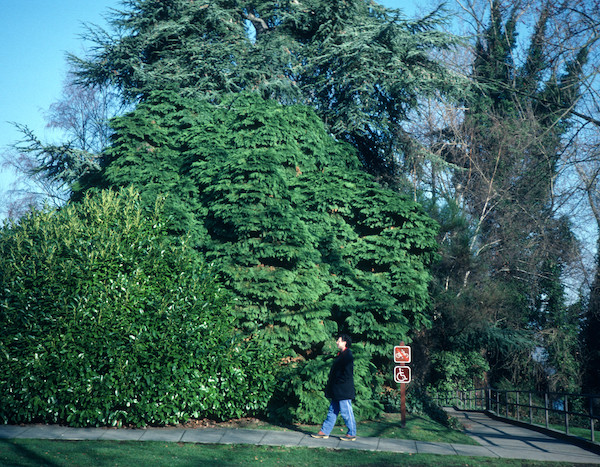
Chamæcyparis Lawsoniana ‘Tamariscifolia’ in Seattle December 1986 when very healthy ; photo by ALJ
|
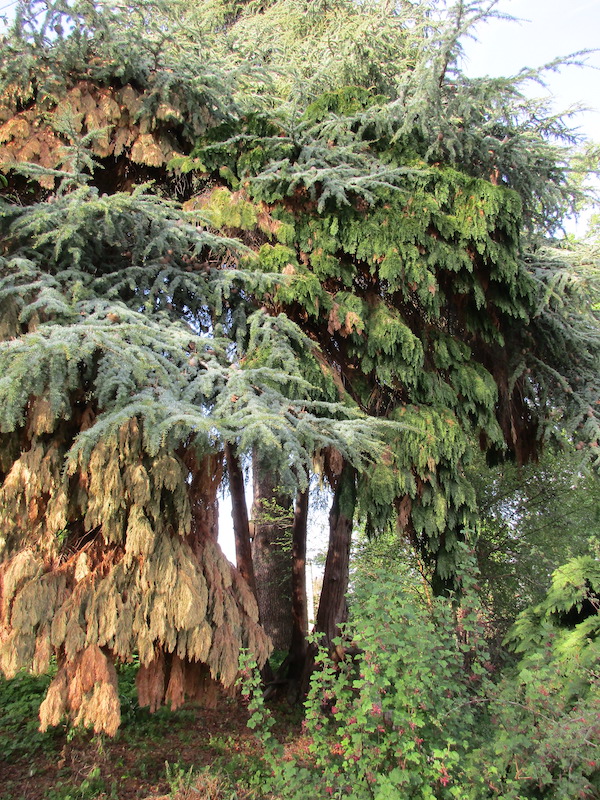
Chamæcyparis Lawsoniana ‘Tamariscifolia’ in Seattle May 2023 with much dieback ; photo by ALJ
|
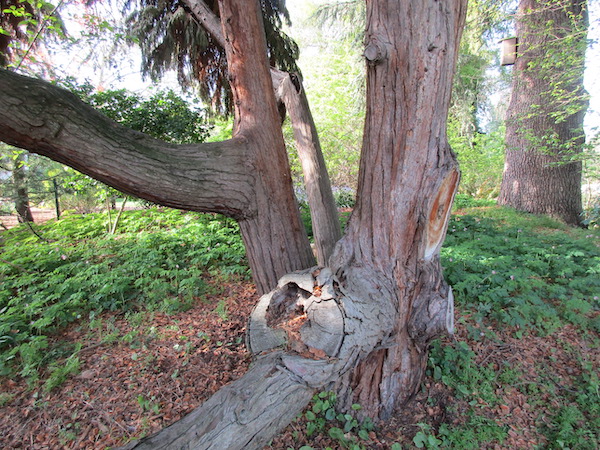
Chamæcyparis Lawsoniana ‘Tamariscifolia’ underneath the crown, showing the trunks, some over 1 foot thick ; photo by by ALJ
|
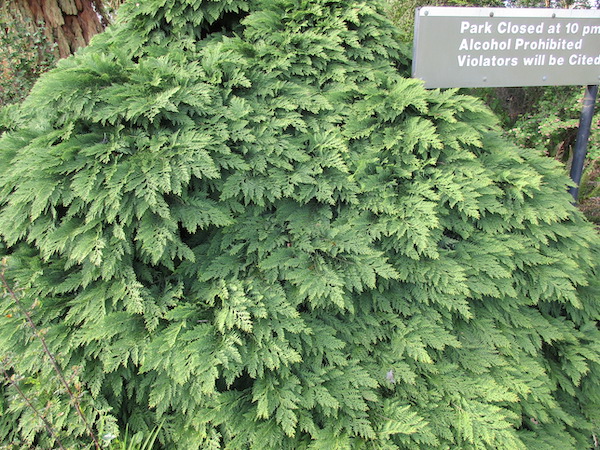
Chamæcyparis Lawsoniana ‘Tamariscifolia’ part of tree that is still healthy, its extreme SE part ; photo by by ALJ
|
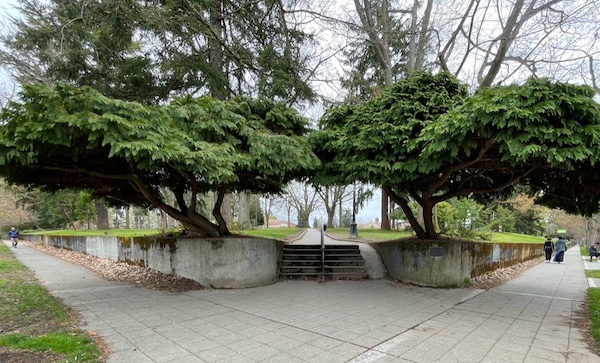
Chamæcyparis Lawsoniana ‘Tamariscifolia’ pair at Hiawatha Playfield ; photo by by Clay Eals
|
|
|

